 No More Diesel-iMT Powertrain In India, As Kia Discontinues It For The Sonet, Seltos And Carens
No More Diesel-iMT Powertrain In India, As Kia Discontinues It For The Sonet, Seltos And Carens
 Hyundai Creta Electric Reaches Dealerships, Check It Out In 9 Images!
Hyundai Creta Electric Reaches Dealerships, Check It Out In 9 Images!

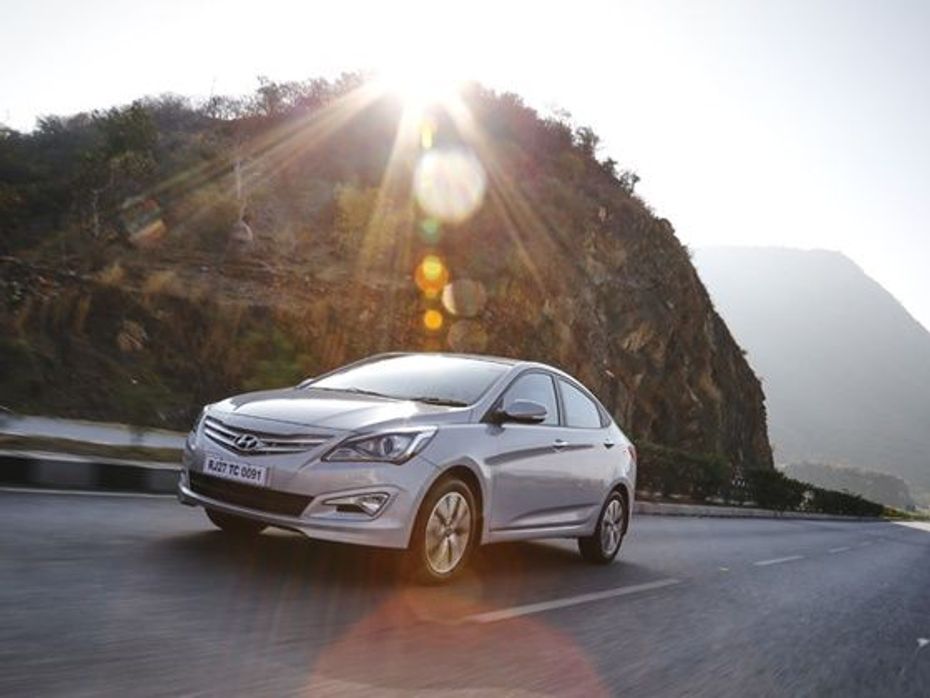
Rajasthan brings with it the right amount of flattery to a car… Good roads, scenic locations and sparse traffic. Udaipur is the crowned jewel of this picturesque state and it’s also an erstwhile kingdom. This town then is quite a fitting place to drive the 2015 Hyundai Verna. The Verna is the erstwhile king of the C-segment, a position it held for a good two years till the Honda City was introduced last year, and during its time at the top of the pyramid, the Verna took this segment to an all new level of luxury, design, features and efficiency.
The Verna was a benchmark the City and the Ciaz had to better. They have in many ways and the game has moved forward enough for Hyundai to play catch up. So right on cue, Hyundai is ready to roll out its facelift. This update is the final one for this generation. An all new Verna will come in sometime next year but until then, the facelifted Verna has to hold fort. Are the updates substantial enough then?

Exterior styling
The Hyundai Verna is arguably the most attractive car in its segment. It’s flowing and sporty lines make the Verna stand out among its peers, new and old. If there was any need for a facelift, it was just to give a fresher car to buyers in this segment who were beginning to look elsewhere.
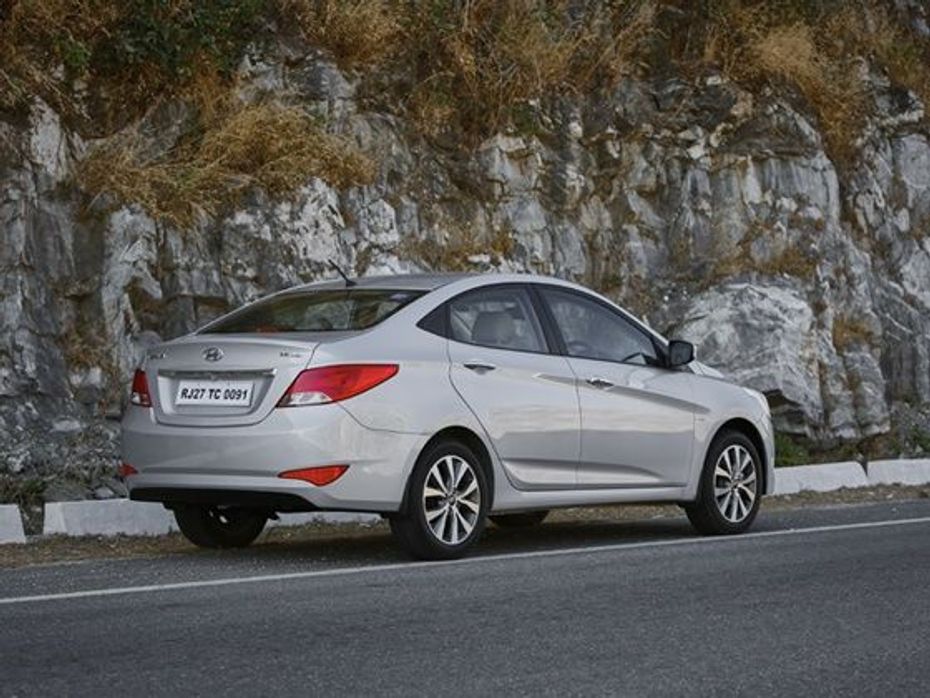
A new set of headlights, customary for a facelift, find their way to the new Verna. As does a new two slat wing shaped grille and a new bumper with a fresh set of boomerang shaped fog lamps. The front end of the Verna looks attractive but doesn’t feel as cohesive as before. The car looks the same and at its attractive best in its side profile. Not much has changed towards the rear either, a new taillamp cluster mimicking LED inserts similar to ones seen in the Elite i20 and a matching set of boomerang reflectors in the rear bumper are the only rejigs.
Rating_4.0_rating
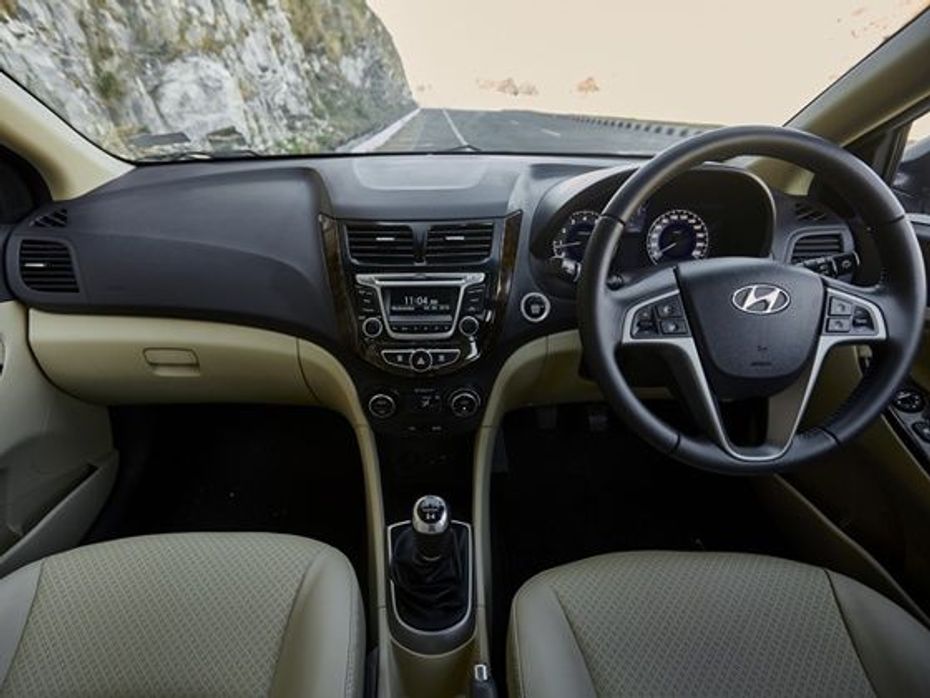
Interior and space
Space on the inside hasn’t changed so don’t expect class leading interior room. It is enough for four large passengers to travel in comfort though. Talking of comfort, the Honda City seats are hard to match for the quality of cushioning. Indians like that soft sinking feeling according to Hyundai and so the seats of the Verna too have got additional padding at the right places with this update. They feel plusher no doubt but under-thigh support in the rear bench is a bit lacking. Front seats are comfortable and the driver’s seat gets height adjustment too.

Hyundai has also borrowed a feature from the Volkswagen Vento. A sliding lever for the front passenger seat positioned on its side can be moved ahead from the back seat when the car is chauffeur driven.
Rating_3.5_rating
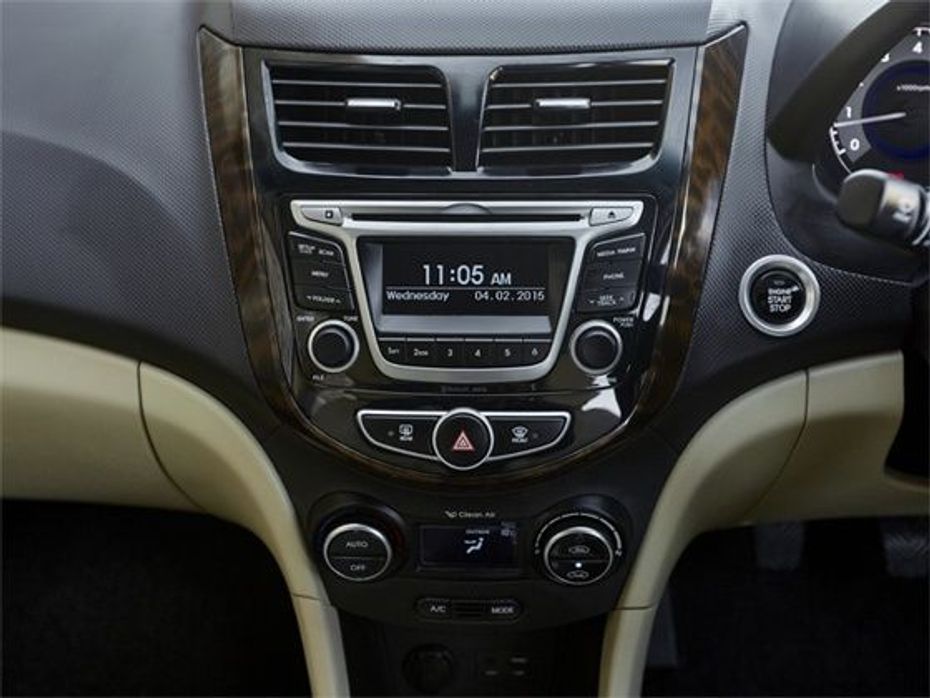
Equipment and features
If not for the Hyundai Verna setting high standards on the features front, the City and the Ciaz wouldn’t have been so well equipped. The Verna even now is the only car in its segment to offer six airbags as standard in top trim and is one of the few to offer ABS as standard across all variants. There is very little addition otherwise in terms of features. What changes is a reversal in colours for the centre console display to improve readability and 1GB of internal storage for your favourite music. You get rain sensing wipers and automatic headlamps, a cooled glovebox, push-button start stop, parking sensors and a rear view camera making it fairly well equipped barring a sunroof, touchscreen multimedia system and rear AC vents.
Rating_3.5_rating
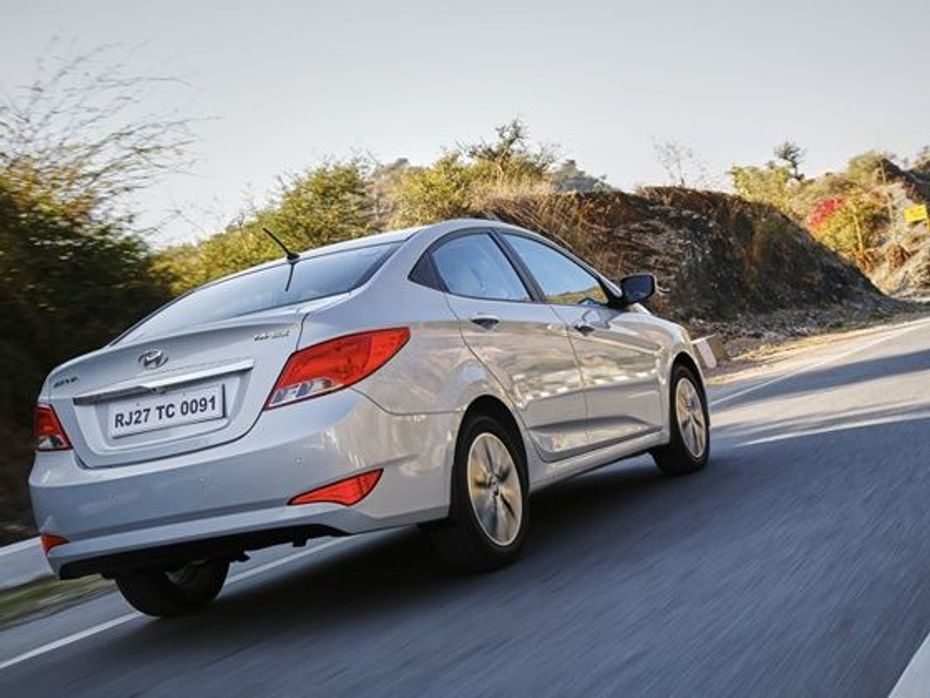
Engines and performance
The Hyundai Verna is offered with a choice of four engines and gearboxes. There’s one for everyone as they say but the ones we are particularly interested in are the 1.6-litre manual petrol and diesel Verna. Again, nothing has changed. The Verna is still the most powerful car in its segment but has had an issue with putting all that power and torque to good use previously. We will come to that in the next section.
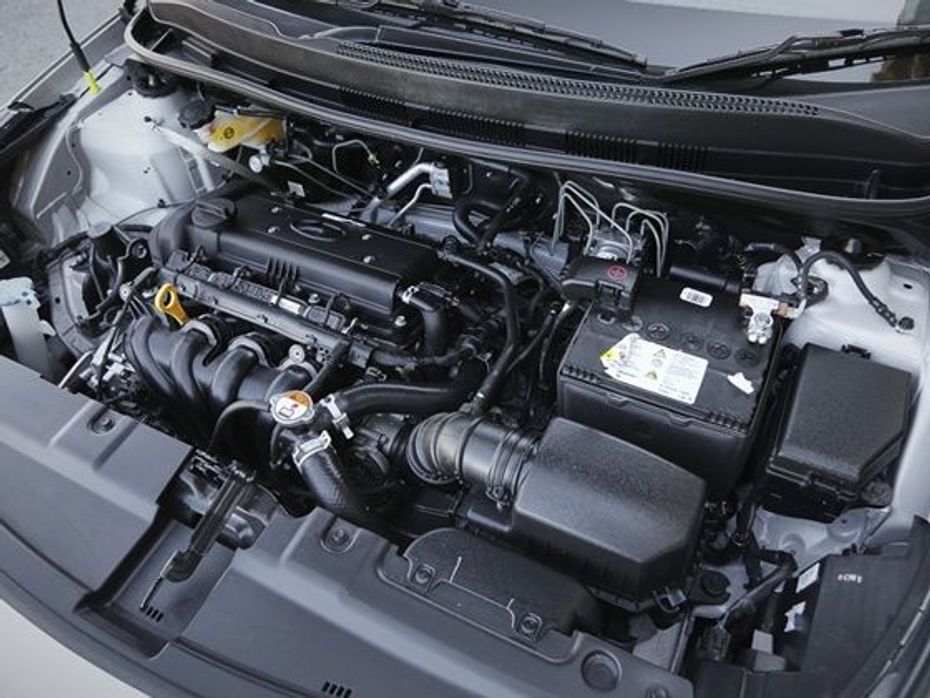
The 1.6-litre petrol unit develops 123PS of power and is a strong performer. It’s got the long legs for the highway and very drivable in the city but doesn’t feel as free revving as the 1.5-litre mill in the City. The petrol is refined though and the impressive NVH levels of the Verna keep engine vibrations at bay. Same goes for the diesel Verna, its 128PS 1.6-litre block churning out the most power you can find in this segment. The Verna diesel is refined and sprightly at a dab of the throttle and closes down gaps with impressive ease. It is also more efficient now.
Rating_4.0_rating

Ride and ease of driving
The Verna is an easy car to drive in town with its parking aids, good visibility out of the driver’s seat and fairly compact dimensions compared to say a City or Ciaz. It also rides well in town but with the update it is that slight bit stiffer at the back. Hyundai has tweaked the rear suspension once again in a constant effort to improve the dynamics of the car. The Verna has always had a strong set of engines and slick gearboxes (the manuals) but the rest of its mechanicals – the suspension and steering didn’t complement the powertrain well. At least one aspect of it has been sorted now. While the Verna feels stiffer sprung for bumpy city roads, it’s nowhere as harsh to be a deal breaker. But once you hit the highway and cruise at triple digit speeds, its stability is mighty impressive. It wallows a lot lesser in undulations and lets you carry higher speeds that you ever could in a Verna.
It still doesn’t inspire as much confidence as we would like due to its inert steering. It doesn’t weigh up as well or give any kind of feedback. Hyundai says the next generation car will have a better rack but with the update nearing the end of this generation’s product life, a steering update could not be dealt with.
Rating_3.5_rating
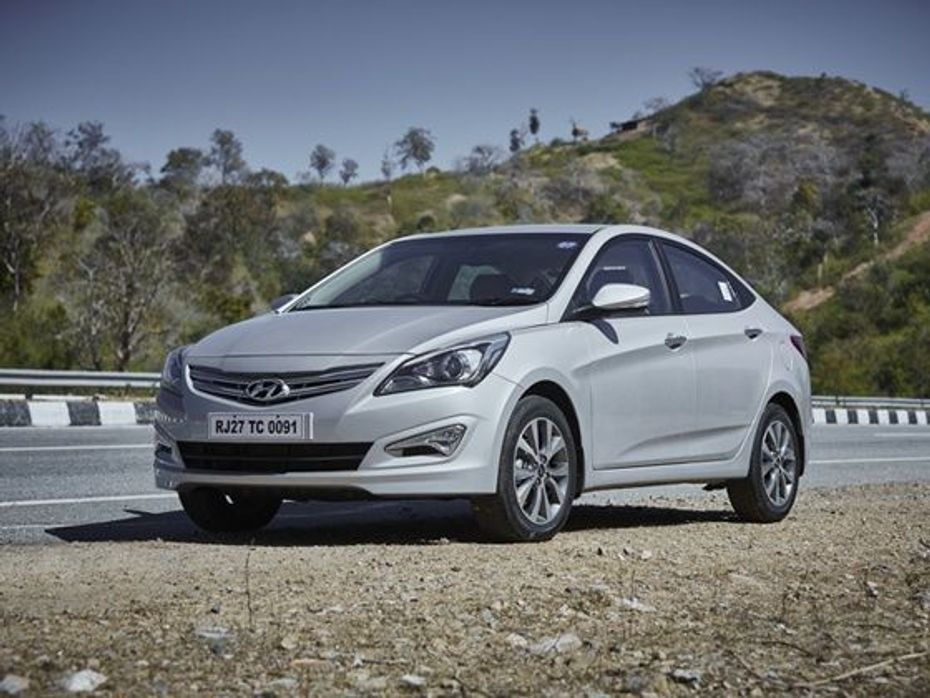
Price and fuel efficiency
The old Verna was priced between Rs 7.6-12 lakh and we expect only a Rs 10,000-15,000 hike as a minor correction if any as the mechanical upgrades aren’t substantial nor is there a large increase in equipment levels. The petrol 1.6 Verna returns an ARAI certified efficiency figure of 17.01kmpl and the diesel 1.6 Verna returns 23.9kmpl.
Rating_4.0_rating
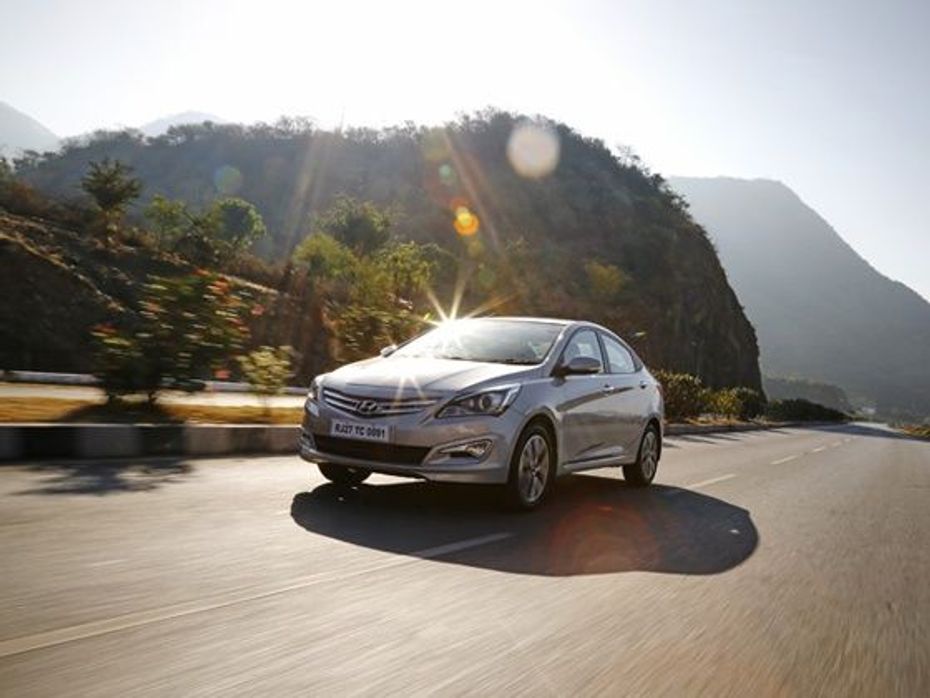
Verdict
The Hyundai Verna has attracted many a buyer with its styling alone. While it has aged well over the four years of its existence, the rise of the Honda City and Maruti Suzuki Ciaz has hit the Verna hard in the past year. A facelift freshens things up for the sedan and gives it a fighting chance in this highly competitive segment. Sorting the Verna’s rear suspension to a large extent and as a result improving its dynamics considerably makes it a better car on the highway than it ever was. The Verna isn’t a driver’s car but it drives better now.
Rating_3.5_rating
 Maruti Ciaz
Maruti Ciaz
India's largest automotive community
 No More Diesel-iMT Powertrain In India, As Kia Discontinues It For The Sonet, Seltos And Carens
No More Diesel-iMT Powertrain In India, As Kia Discontinues It For The Sonet, Seltos And Carens
 Hyundai Creta Electric: Things You Get With Each Of Its 5 Variants
Hyundai Creta Electric: Things You Get With Each Of Its 5 Variants
 Here Are Some Adrenaline Pumping Experiences From Auto Expo 2025 That You Should Not Miss!
Here Are Some Adrenaline Pumping Experiences From Auto Expo 2025 That You Should Not Miss!
 All You Need To Know About The Surprise Element At Auto Expo 2025: BMW iX1 LWB
All You Need To Know About The Surprise Element At Auto Expo 2025: BMW iX1 LWB
 Hyundai Creta
Rs. 11.10 Lakh
Hyundai Creta
Rs. 11.10 Lakh
 Hyundai Venue
Rs. 7.94 Lakh
Hyundai Venue
Rs. 7.94 Lakh
 Hyundai Verna
Rs. 11.07 Lakh
Hyundai Verna
Rs. 11.07 Lakh
 Hyundai i20
Rs. 7.04 Lakh
Hyundai i20
Rs. 7.04 Lakh
 Hyundai Creta Electric
Rs. 17.99 Lakh
Hyundai Creta Electric
Rs. 17.99 Lakh
 Maruti Dzire
Rs. 6.79 Lakh
Maruti Dzire
Rs. 6.79 Lakh
 Hyundai Verna
Rs. 11.07 Lakh
Hyundai Verna
Rs. 11.07 Lakh
 Toyota Camry
Rs. 48.00 Lakh
Toyota Camry
Rs. 48.00 Lakh
 Honda Amaze
Rs. 7.99 Lakh
Honda Amaze
Rs. 7.99 Lakh
 Hyundai Aura
Rs. 6.54 Lakh
Hyundai Aura
Rs. 6.54 Lakh